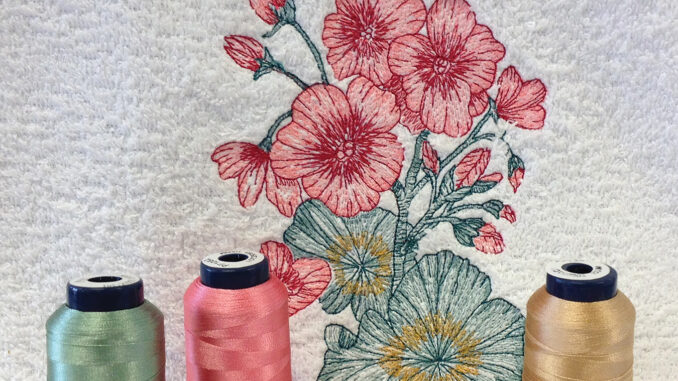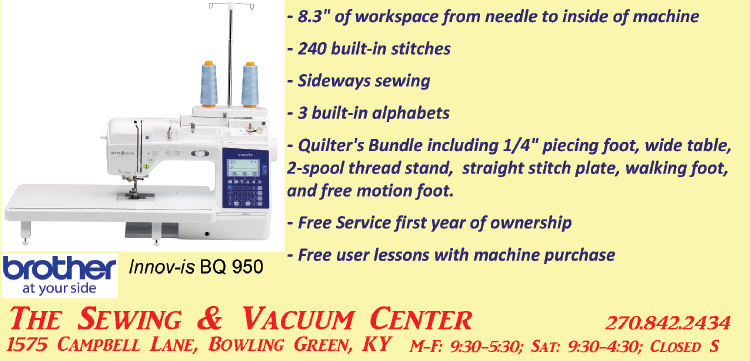
As sewers, we usually spend a lot of time picking out the fabric and design/pattern for our project, whether it’s making a garment, quilt, or home dec item. Thread is an afterthought and matching thread colors to the fabric is our biggest consideration. Your thread choice should receive careful consideration along with your fabric as the thread is the basic construction unit of your project. Good thread can make the stitching on the project much easier and can prolong the life of the item.
Thread quality should be a first consideration. Unroll a length of thread, hold up to the light, and examine closely. Look for thick and thin spots – a good quality thread should be smooth and even. Look also to see how much “fuzz” is present on the thread; a good quality thread will not have much present. The thread should also unroll smoothly off the spool.
Fiber content is another consideration when selecting thread.
- All-cotton thread can be used for heirloom sewing, piecing and quilting, decorative stitching, and sewing with natural fiber fabrics.
- All-polyester thread is a good choice for most sewing projects. This thread is strong, colorfast, and resistant to rot and most chemicals.
- Cotton-covered polyester thread combines the strength qualities of the polyester but gives the look of cotton thread when stitched. A good thread for most sewing projects.
- Mono-filament nylon thread is very strong and rot resistant. The lightweight version of this can be used for invisible sewing and blind hems. Prolonged use of this can affect the tensions on your machine.
- Rayon thread is made from a continuous fiber, has no stretch, very little strength and isn’t always colorfast. It does have a beautiful finish and is used most exclusively for machine embroidery. This is not a good thread to use for general sewing. Rayon thread may also lose its color if washed with strong detergent or bleach.
- Silk thread is very strong and smooth, with a shiny finish. Silk thread is often used for hand-sewing and fine tailoring. In quilting, silk thread is used for fine hand appliqué. A heavier weight thread can also be used for buttonholes or decorative stitching.
Thread weight can also be confusing as weights are not standardized. In general, thread weights may be expressed as 50/2, 60/2, 70/2, or 80/2. The first number refers to the weight of the thread with the higher number indicating a finer thread. The second number refers to the thread ply (number of threads twisted together). Medium weight threads are usually 50/3, or 30/2. These are good for most general sewing projects. Machine embroidery threads are generally a 30/2 or 40/2 weight. Quilting/piecing threads are mostly a 50/2 weight.
Storing Thread
Threads are best stored away from light and heat. A closed cabinet or drawer is best. Many of us use thread racks that keep our threads handy but be sure you are using these threads on a regular basis. Consider making a cover for your thread rack if your thread tends to reside there a while!
Using “Old” Thread
Many well-meaning friends and family will give us spools of thread that are 15+ years old. The spool may look good but be careful about using old thread. Do a check of the thread for lint and smoothness. Also, pull on the thread and see if it breaks easily – if so, discard the thread. Generally, threads that are 20 or more years old may not be usable. Thread construction has changed as well as machine construction. Today’s sewing machines have tensions set to accommodate the newer threads. It may be best to find some clear jars, add the thread spools and use for a cheerful decoration in your sewing area.
Using a good quality thread will cause less issues with your machine, add support to your project, and give you a great stitching experience!
-submitted by The Sewing & Vacuum Center



